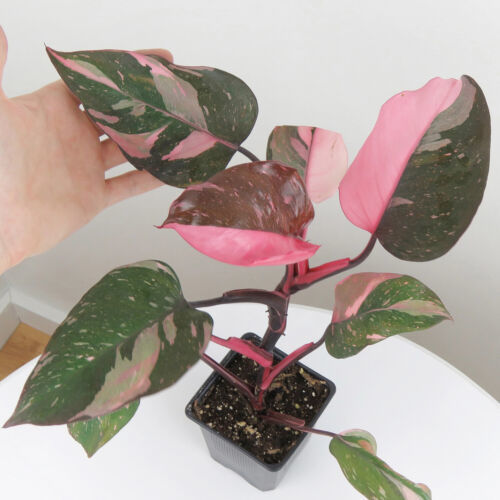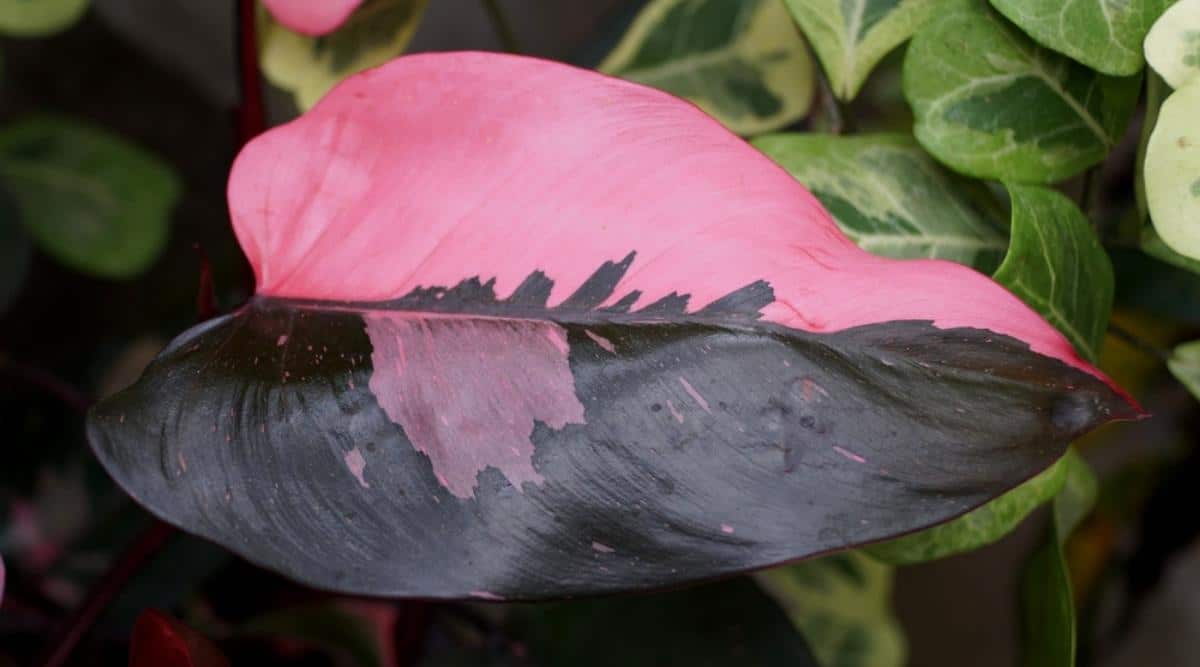PPP Plant or Pink Princess Philodendron has some of the best pink leaves of any plant in the world. The variegation is never the same on this house plant. Some leaves have a marbled look to them and others have a stripe or spot. This plant is highly popular and sought after by most plant collectors.

Pink Princess Philodendron Care
To care for a Pink Princess Philodendron, follow these steps:
- Provide bright, indirect light. The plant will tolerate low light, but it will grow best in bright, indirect light. Avoid direct sunlight, as it can scorch the leaves.
- Keep the soil moist but not waterlogged. The soil should be kept consistently moist but not waterlogged. Allow the top inch of soil to dry out before watering again.
- Keep humidity high. Philodendrons prefer high humidity, so consider using a humidifier or placing a tray of water near the plant.
- Fertilize regularly. Feed the plant every 4-6 weeks with a balanced, water-soluble fertilizer during the growing season.
- Prune as needed. Remove any yellow or damaged leaves and prune back leggy growth to encourage bushier growth.
- Be aware of pests and diseases. Watch for common houseplant pests such as spider mites and mealybugs, and treat them promptly if you see them.
Note: The Pink Princess Philodendron is considered a toxic plant, so it is important to keep it out of reach of children and pets.
Pink Princess Philodendron For Sale
PPP plant for sale. You may want to check out an online store and take a look at all the pictures before you choose one. Many do not have a lot of pink in the leaves. Look at multiple photos if you are able before purchasing the right one for you.
Pink Princess Philodendron House Plant
The Pink Princess Philodendron, also known as Philodendron erubescens ‘Pink Princess’, is a hybrid cultivar of the Philodendron genus. The Philodendron genus is native to the tropical Americas and has a long history of cultivation.
The Pink Princess cultivar was first discovered as a mutation of the Philodendron erubescens plant in the late 1990s. The mutation caused the plant to produce pink and green variegated leaves, which made it highly desirable among plant enthusiasts.
It was first propagated and sold by a Dutch nursery, “De Vroomen” in the early 2000s. Since then, it has become a popular houseplant and a sought-after collector’s item due to its unique coloration and hardiness.
The Pink Princess Philodendron is known for its ability to adapt to a wide range of conditions, making it a relatively easy plant to care for and propagate. However, due to its popularity and uniqueness, it can be difficult to find and it’s considered as a rare and valuable plant.
It’s important to note that the Pink Princess Philodendron is also considered a toxic plant, so it is important to keep it out of reach of children and pets.


